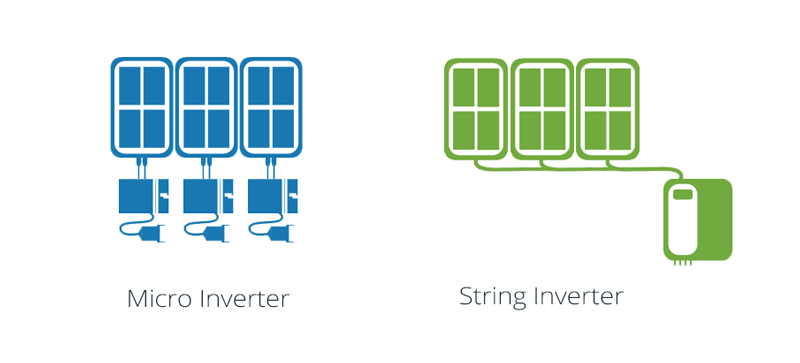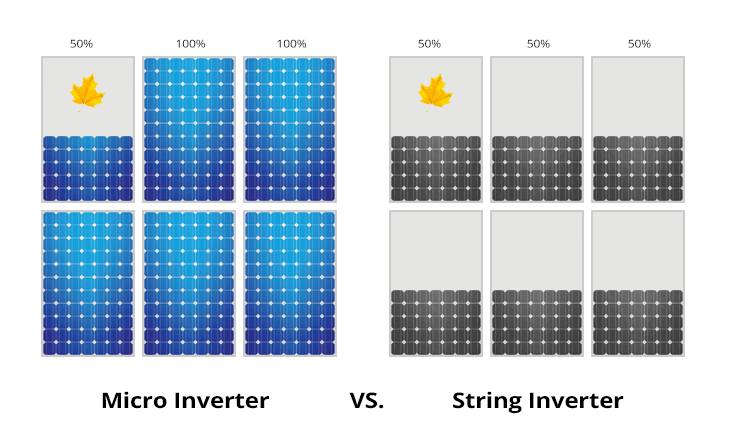Home Solar Inverters How Many Microinverters Do I Need?
How Many Microinverters Do I Need?
Without a decent inverter, your solar panels are pretty much as useful as a car with no petrol. These clever gadgets convert the sunlight your panels nab into electricity your house can actually make use of. Essentially, they’re flipping direct current (DC) into alternating current (AC), which is what fires up your appliances and keeps your house lit. When it comes to inverters, there are three top contenders: **power inverters**, **microinverters**, and **string inverters**. Each plays a unique role, and getting your head around which one is right for you could massively ease your worries. So, stick with us as we dive into the details of these solar innovations, and find out how picking the perfect one could significantly shrink your electricity bill.
Suppose you opt to use microinverters instead of the more popular string inverters or power inverters. In that case, the number of microinverters you need will depend on the number of solar panels installed. If you install six solar panels, you need six microinverters as each panel has a microinverter connected to the back of it.
You need to first figure out the size system you need, and the number of panels that size system needs which will give you the number of microinverters needed.

Table of Contents
ToggleWhat are microinverters?
A microinverter is one you install on an individual solar panel. The typical inverter everyone is used to is the string inverter, which operates as central control. In other words, you use only one inverter for all panels in a solar panel system. But a microinverter is installed on each solar panel, meaning that every panel works with a dedicated inverter.
The number of solar panels you install on your property, whether on the roof or the ground, determines how many microinverters you need. If you install four panels, you need four microinverters.
However, these inverters work by the electricity output of each panel. If a panel is big enough to produce about 400 watts, the microinverter installed must be big enough to convert the direct current to alternating current.
Microinverters vs string inverters
Microinverters are independent and exclusively work for the panels to which they are connected. One microinverter for each panel.
A string or central inverter on the other hand completes a circuit of connected panels. They are a lot larger and handle converting the DC current into AC all in one place.
If your roof gets uninterrupted sunshine all day long then a central inverter will work fine. If there is partial shading for any period of time a microinverter is the way to go.

Using microinverters: pros and cons
We would like to point out several advantages of using microinverters. But there are also downsides, and it is crucial to keep them in mind if you plan on using this type of inverter.
Pros of using microinverters
- Flexibility for layout and expansion of panels.
- Low risk of a single point of failure
- Capacity to shut down rapidly
- Better and longer warranty
- Optimization, monitoring, and troubleshooting at the panel level
- More detailed connections
Cons of using microinverters
- Requires detailed maintenance, which may be difficult
- More expensive
When to use microinverters
Several situations make microinverters ideal for solar panel systems.

Complicated installation or roof shape
If you have a complicated solar panel installation, microinverters will ensure you have optimal power output. Sometimes, the shape and type of roof may necessitate installing the panels at different angles. Some may face north, while others face east; the inverters will enable them to perform at their peak whenever the sun reaches them.
Partial shading
Another ideal time to use microinverters is if your roof or ground installation is partly in the shade. Solar panels work best when there is enough sunlight. They draw the most sunlight during peak hours and convert it to electricity. It is at these times that the system can store excess power.
However, if there is not enough sunlight, the house may not have enough power. The microinverters you install will enable the panels to deliver enough electricity to run the house. Since there is no central system to convert the electricity from all the panels, the power output tends to be higher.
Panel performance
With these inverters, you can keep an eye on how each panel performs. In a solar panel system, each panel has an individual performance. But you may be unable to assess this performance on individual levels if the system uses a string or power inverter.
As the name implies, a microinverter allows for specific panel monitoring and performance assessment. That way, you can quickly detect issues with any panel and find a lasting solution instead of waiting until the entire system fails.
Considerations
Some factors affect the type of microinverter you buy. Consider the size, which we have discussed. The higher a panel’s power output, the bigger the microinverter to avoid clipping. Also, consider the efficiency; how much energy it loses as heat when converting from direct current to alternating current.
If you want a higher-performing microinverter, you may have to pay more. The same is true if you want one with a more extended warranty. However, the benefits are usually worth the price.
Compare Solar Panel Quotes
Table of Contents
Toggle









